|
|
Post by thamm1 on Feb 15, 2016 16:24:01 GMT -5
2) Haplogroup E and its parent clade haplogroup DE originated with Northeast Africans (or possibly even Near Easterners), not with Bantus. This is because Horners have the highest frequencies of haplogroup E, the highest variety of different sub-clades of the haplogroup (i.e. the highest diversity), and the exclusive presence of the oldest branches of the haplogroup. "The presence of two underived E-M96 Saudi lineages raises interesting questions related to the macrohaplogroup DE-YAP phylogeography. The recent resolutions of the CDEF-M168 tripartite structure to the bipartite DE-YAP and CF-P143 [16,31] extends the conversation regarding the early successful colonization of Eurasia. While several scenarios remain potentially possible the most parsimonious model is the most prudent. This model proposes the successful colonization of Eurasia by migration(s) of populations containing precursor Y-chromosome founder macrohaplogroup CDET-M168 and basal mtDNA L3 representatives. Regions near but external to northeast Africa, like the Levant or the southern Arabian Peninsula could have served as an incubator for the early diversification of non-African uniparental haplogroup varieties like Y chromosome DE-YAP*, CF-P143* and mtDNA M and N molecular ancestors. These would have spread globally and diversified over time and space. This model would imply that both CF-P143 and the DE-YAP evolved nearby but outside Africa. One DE-YAP* ancestor would have spread to Asia and evolved to haplogroup D while another DE-YAP* returned to northeast Africa and evolved into hg E." www.biomedcentral.com/1471-2156/10/59"Y-DNA haplogroup E would appear to have arisen in Northeast Africa based on the concentration and variety of E subclades in that area today. But the fact that Haplogroup E is closely linked with Haplogroup D, which is not found in Africa, leaves open the possibility that E first arose in the Near or Middle East and was subsequently carried into Africa by a back migration[...] E1b1b1 probably evolved either in Northeast Africa or the Near East and then expanded to the west--both north and south of the Mediterranean Sea. Eb1b1 clusters are seen today in Western Europe, Southeast Europe, the Near East, Northeast Africa and Northwest Africa." Read more: hamiticunion.proboards.com/thread/4/hamitic-origin-haplogroup#ixzz40GqMPFNj |
|
|
|
Post by thamm1 on Feb 15, 2016 16:24:32 GMT -5
3) Bantus only recently acquired the haplogroup by assimilating some Afro-Asiatic males in Northeast Africa, which is why the most common haplogroup E lineage Bantus possess (namely, E1b1a/E3a) is only about 10,000 years old. The haplogroup, along with the Bantu languages, was then spread to the rest of Sub-Saharan Africa by Bantu intermediaries via the Bantu expansion of 3500 years ago. "E1b1a is an African lineage that probably expanded from northern African to sub-Saharan and equatorial Africa with the Bantu agricultural expansion." www.isogg.org/tree/ISOGG_HapgrpE.htmlen.wikipedia.org/wiki/Bantu_expansion In the process, the migrating Bantus' paternal DNA (haplogroup E lineages) replaced the pre-existing Y-DNA haplogroups in the previously Khoisan, Pygmy (hunter-gatherer) and Afro-Asiatic-inhabited regions of southern and southeastern Africa that they invaded. "The data presented demonstrate a recent origin for most paternal lineages in west-central Africa as a result of the "Bantu expansion" that erased the Y-chromosome diversity previously found. However, some traces of ancient paternal lineages are found, mainly in hunter-gathererers. These results contrast with the data provided by mtDNA, where ancient lineages are found and substantial maternal gene flow from hunter-gatherers to Bantu-farmers has been suggested." books.google.ca/books?id=X_cac38pfmAC&pg=PT117#v=onepage&q&f=false Read more: hamiticunion.proboards.com/thread/4/hamitic-origin-haplogroup#ixzz40GqSOhbh |
|
|
|
Post by thamm1 on Feb 15, 2016 16:24:55 GMT -5
|
|
|
|
Post by thamm1 on Feb 15, 2016 16:25:54 GMT -5
5) Most Negroid peoples speak languages from the Niger-Congo, Nilo-Saharan and Khoisan language families -- none of which are genetically related to the Afro-Asiatic language family spoken by most Hamitic peoples. Afro-Asiatic's nearest relatives are language families that are overwhelmingly spoken by populations with Caucasoid physiognomies, together with which it is grouped in the Nostratic and Borean super-phylums. "It is clear that the Borean hypothesis involves a super-phylum some of whose sub-taxa are themselves super-phyla. The term phyletic chain is introduced as a better label, particularly because the Borean groups show a chain like distribution from southern Ethiopia through southwestern Eurasia to northeast Asia and down to the end of the New World. Borean has clear similarities to Swadesh's Vasco-Dene. Borean is predominantly associated with human populations of "Caucasoid" or "Northern Mongoloid" physical appearance, the major exceptions being southern India, southern China, southwestern Ethiopia, northern Nigeria, and the Chad Republic. Borean as a chain is closely associated with the appearance of the Upper Paleolithic in the Levant, Europe, and western Eurasia from 50,000 to 45,000 years ago." greenberg-conference.stanford.edu/Fleming_Abstract.htm starling.rinet.ru/maps/maps17.php?lan=en This at the very least suggests a proto-Caucasoid origin for not only haplogroup E, but for the more upstream haplogroup CT too. It also reinforces the observation that haplogroup E is not the original paternal lineage of Bantus, Nilotes and other Negroid populations, but rather one that they later acquired. Read more: hamiticunion.proboards.com/thread/4/hamitic-origin-haplogroup#ixzz40GqZgpe0 |
|
|
|
Post by thamm1 on Feb 15, 2016 16:26:46 GMT -5
6) Bantus, Nilotes and other Negroid populations cluster with Pygmies and the Khoisan (modern Paleo-Africans) in autosomal DNA tests instead of with haplogroup CT-descended Eurasian populations (the latter of which encompasses the rest of the world). "studies support a primary division of human populations into sub-Saharan Africans and Eurasian populations" www.sciencedirect.com/science/article/pii/S0003399502011401This as well all but confirms that the haplogroup CT-descended clade E was not the original paternal lineage of any Negroid peoples. Rather, it was and is primarily a Hamitic Caucasoid marker. Read more: hamiticunion.proboards.com/thread/4/hamitic-origin-haplogroup#ixzz40GqcYhUU |
|
|
|
Post by thamm1 on Feb 15, 2016 16:27:23 GMT -5
The subsaharan compponent in north africa dates merely to transaharan slave trade <1 200 years ago :
"We estimate that a migration of western African origin into Morocco began about 40 generations ago (approximately 1,200 ya); a migration of individuals with Nilotic ancestry into Egypt occurred about 25 generations ago (approximately 750 ya)"
(Brenna Henn et al.)
|
|
|
|
Post by Tukuler al~Takruri on Feb 15, 2016 17:02:26 GMT -5
Oh boy Herr we go with brown white people. Call Crayola and spread the news! Why we don't play the Caucasoid game www.egyptsearch.com/forums/ultimatebb.cgi?ubb=get_topic;f=15;t=004651;p=1Red & brown Caucasians are what you call Niggahs when they move next door to you. Otherwise only non-Nighahs in textbooks etc. They was black They were white Ho hum, that's what all you freaks resort to because you don't have any knowledge to share on AE culture and civilization. Brown/red caucasoid people are still caucasoid people in physical appearance, never negroid  read the paper above about the genetics of north africa |
|
|
|
Post by Tukuler al~Takruri on Feb 15, 2016 17:55:36 GMT -5
When Jobrani looked at college applications in his counselor's office, he saw no racial category for Iranians. "That's because you're white," his counselor explained as she instructed him to check the box marked "white." "I told her, 'What do you mean, white? I've been going through all this crap, all this ribbing and teasing for years, and I've been white all this time? You should have told me earlier." Jobrani now has a message for other Arab- and Persian-Americans who have been living in racial limbo: "Check it right; you ain't white!" www.cnn.com/2010/US/04/01/census.check.it.right.campaign/ |
|
|
|
Post by anansi on Feb 15, 2016 20:15:43 GMT -5
While many Negroid populations today carry haplogroup E lineages, this was not the case only a few centuries ago. This has to do with the fact that: 1) The oldest Negroid skeletal remains that have ever been found are only about 12,000 years old i.e. tens of thousands of years younger than when the mutation that defines haplogroup E first arose. "On the basis of genetic and archaeological data, black Africans seem to have radiated from a relatively small West African and possibly pygmy population within the last 20,000 years (Coon, 1962, pp. 651-656; Spurdle et al., 1994; Watson et al., 1996). The time and place of origin can be further narrowed down with linguistic data. Speakers of proto-Niger Congo broke up c. 10,000 BP and the oldest derived group appear to be proto-Mande speakers, whose descendants inhabit the Niger's headwaters near the Mali-Guinea border (Blench, 1984, pp. 128-129; Ehret, 1984; Murdock, 1959, pp. 44, 64-68)[...] Thus, black Africans were still absent from most of sub-Saharan Africa even within historic times. When the Egyptians began to build their pyramids, the peoples living to the south were scarcely darker in color. They were simply seen as uncivilized Egyptians. Thus, the civilized world initially encountered a much narrower range of human phenotypes than it would later on. This context shaped the intellectual worldview in its early stages, including theorizing on universal brotherhood. To a degree not easy to assess, we are heirs to notions of human sameness that were first conceived ‘before Africa became black’." Read more: hamiticunion.proboards.com/thread/4/hamitic-origin-haplogroup#ixzz40Gq9yqzG 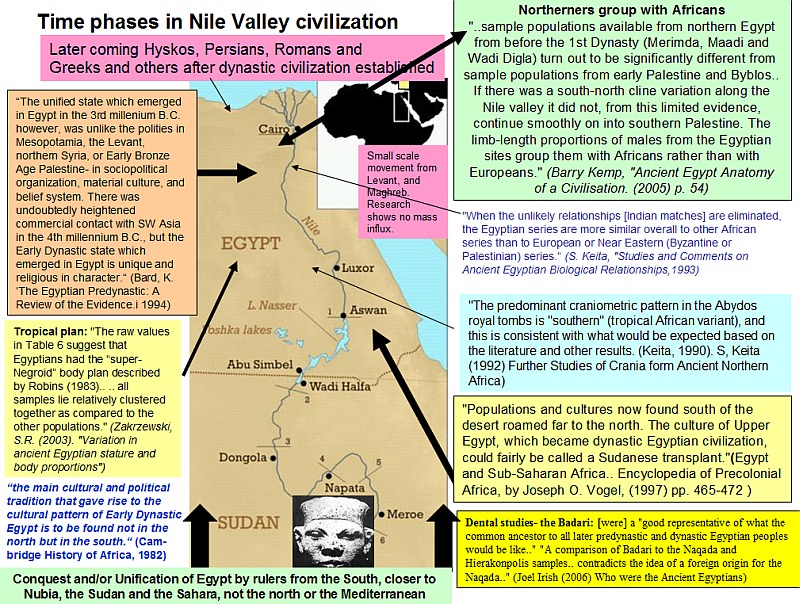 No dude, the oldest so-called Negroid remains is that of the first modern human complete with tropical body plans and black by necessity, you can regurgitate the blackwhite man nonsense all you want but, it still cant change the fact that white ppl came about 7000yrs ago, you skipped over the fact of the wet phase Sahara that was posted a pg or two back,nor did you answer the question.. where did the ancient Kemitian claimed as the origins they wrote it down for all to see, I am going to insist that you deal with both the wet phase Sahara and the issue of the peopling of ancient KMT. so again where did the Kemitians said they came from. Excellent leg work was done by Zarahan. I am not going to be goaded into providing extra outside quotes for it is already presented here if you want to do that then non klikable citation are presented above.you copy and place it in your search engine if you are not satisfied. |
|
|
|
Post by thamm1 on Feb 26, 2016 5:36:51 GMT -5
a matter of fact, the only population described as SIMILAR to the ethiopians in north africa in the times of the Roman hegemony were a tribe dwelling in the Sahara laying south east of the Moroccan Atlas; this population was very likely of Capoid race, and are the responsible of the <1% of the A00 yDNA present in North Africa.
Not to forget that the fair-skinned (and often blond) Getules ancestors of the Tuareg had numerous sub-saharan slaves.
|
|
|
|
Post by thamm1 on Feb 26, 2016 5:37:11 GMT -5
"in some Berber speaking groups"
It is not unusual to find in north africa a black skinned berber speaker; there are many in the south east saharan region famous for its long trade history with the subsahran kingdom of Mali; of Ghana.. Yet Berber speakers do not refer to these populations as as "Amazigh" (witch is specific to fair-skinned native berbers) but as "Asuqi" (berberized black sub-saharans). Tautological here
|
|
|
|
Post by thamm1 on Feb 26, 2016 5:58:56 GMT -5
 Mosaic from Dougga, Tunisia (2nd century CE): slave carrying a wine jar (pitho) pours wine wears typical slave clothing and an amulet against the evil eye.  ? |
|
|
|
Post by anansi on Feb 26, 2016 8:11:47 GMT -5
"in some Berber speaking groups" It is not unusual to find in north africa a black skinned berber speaker; there are many in the south east saharan region famous for its long trade history with the subsahran kingdom of Mali; of Ghana.. Yet Berber speakers do not refer to these populations as as "Amazigh" (witch is specific to fair-skinned native berbers) but as "Asuqi" (berberized black sub-saharans). Tautological here Off course it's not unusual for they were the original and the Eurasian elements came after alot of it through slave mothers from as far away as Turkey and the Caucasus this is played out in the rise of the Mamluke slaves soldiers and female slaves imported even as far south into Mali and Kanam Bornu , and again E1b1b1 is African with it's parents in east Central Africa, some of these people migrated out of Africa taking with them M35 into both Europe and adjacent Levant and Arabia proper. we know this because it peters out at the Zorgos mts along with their language group.    While trade in slaves did exist between these groups there were no established pecking order as 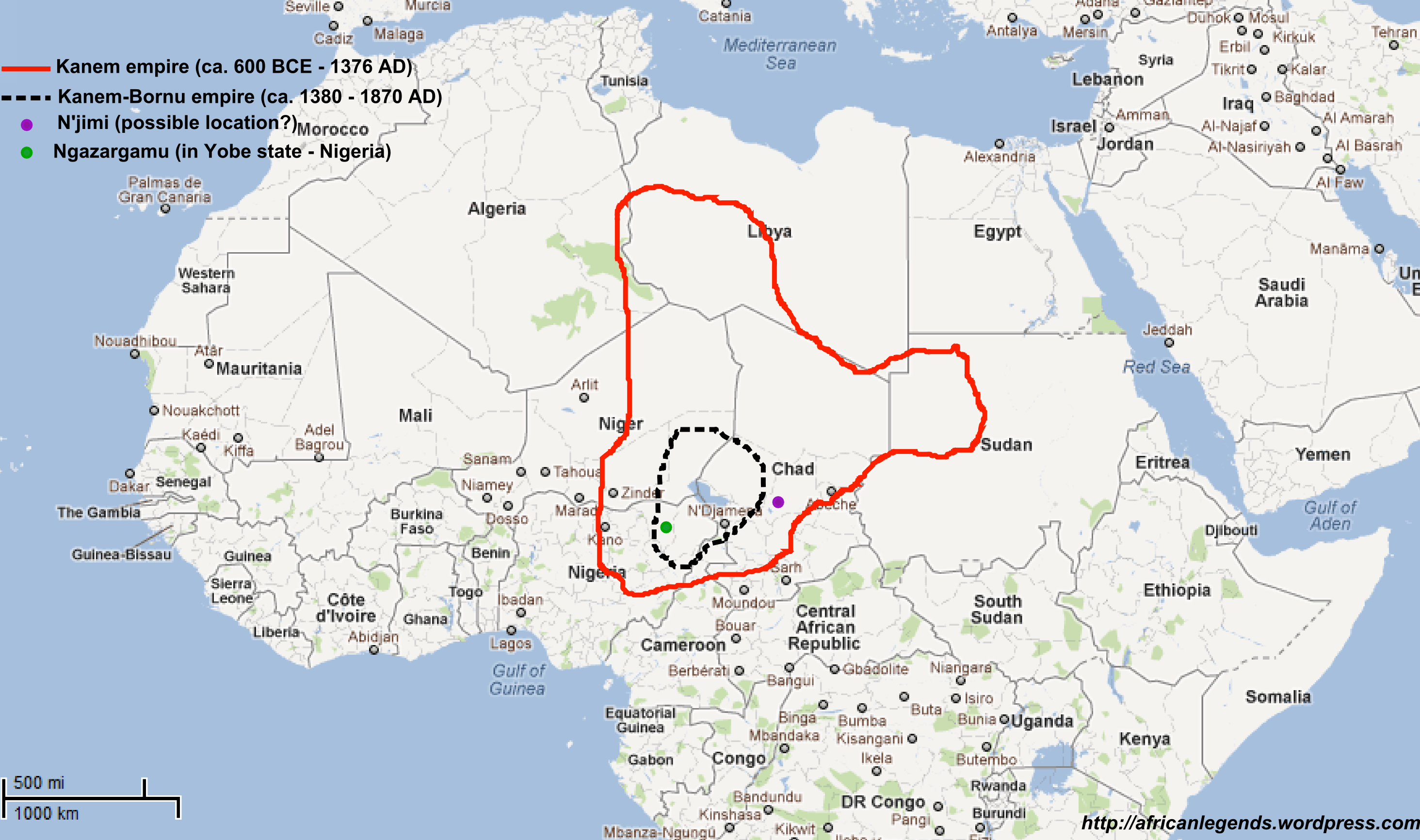 The Map above showed how far north the Kenem Bornu empire extended at it's hight. |
|
|
|
Post by Tukuler al~Takruri on Feb 26, 2016 16:55:24 GMT -5
Well this dolt offers us revisit and revisits are always good. Representing the African E male kin.  E-M2 and E-M35 are cousin haplogroups from E-P2. E-M2 basically flourished in Africa from Sahara southward E-M35 expanded towards the north and east in Africa. E-M81 derives from E-M35 E-M2 is mostly Sub-Saharan is one kind of African hg. E-M81 is Northwestern is another African hg variety. Both are African. E-M81 is not in sub-Sahara. E-M33 is Saharan and sub-Sahara E-M2 too  |
|
|
|
Post by zarahan on Feb 26, 2016 22:00:14 GMT -5
lol Excellent summary. Looks like our old doltish friend "Anglo" is back at it again with his long debunked "Hamitic Union" nonsense, "referencing" the Wikipedia pages he himself goes in to change before "citing" them. But mere repetition and "massaged" quotes from online genealogy websites cannot change the facts. Credible data and scholars show that the Haplogroup E does originate in "sub-Saharan" Africa- home of the dreaded "negroids". 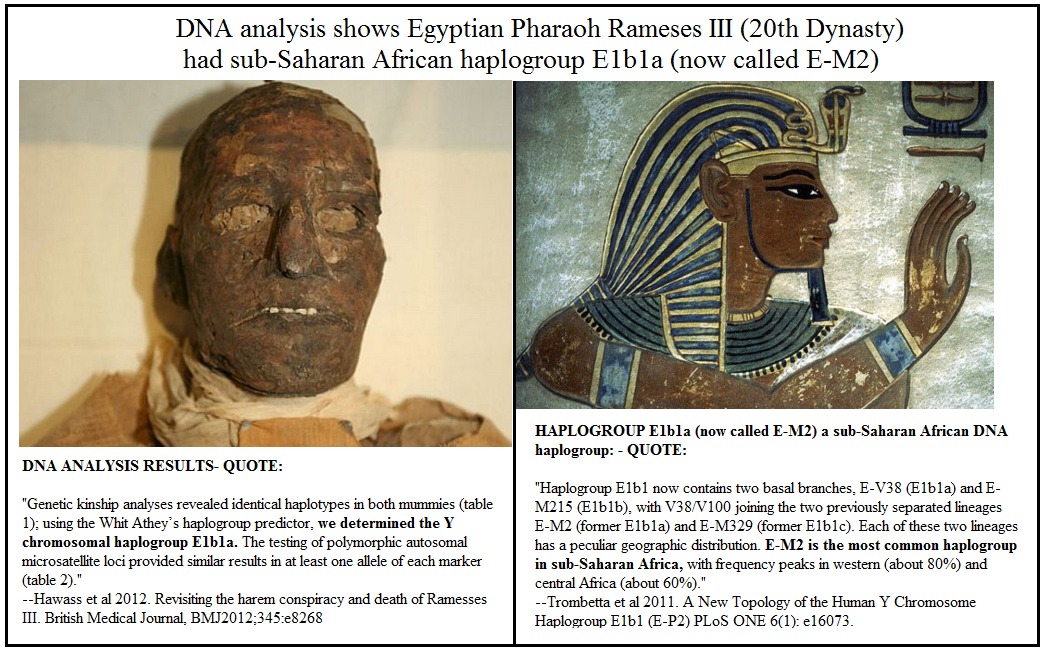 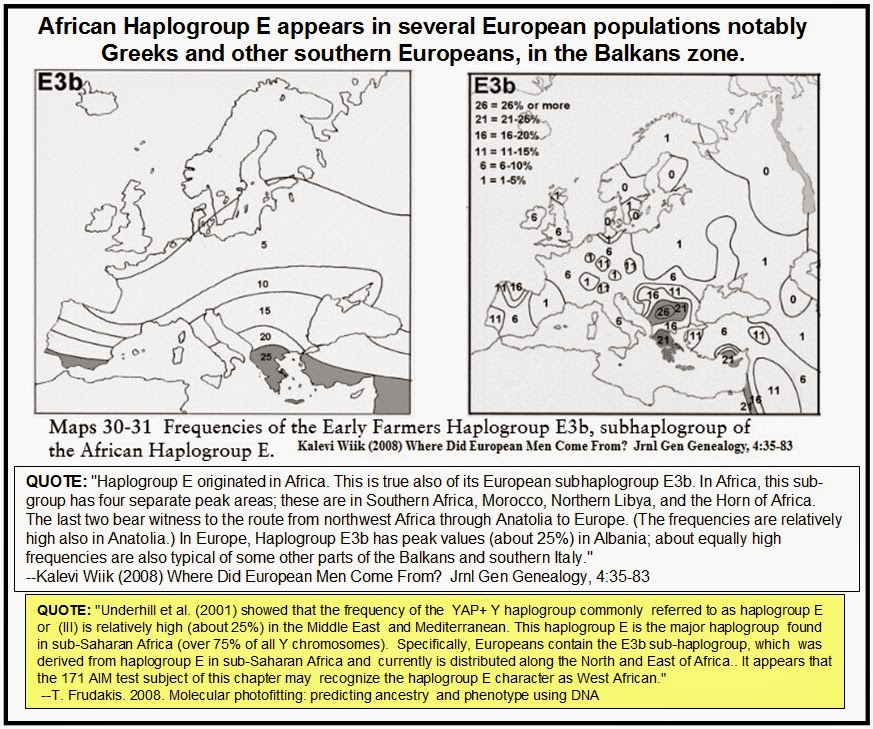 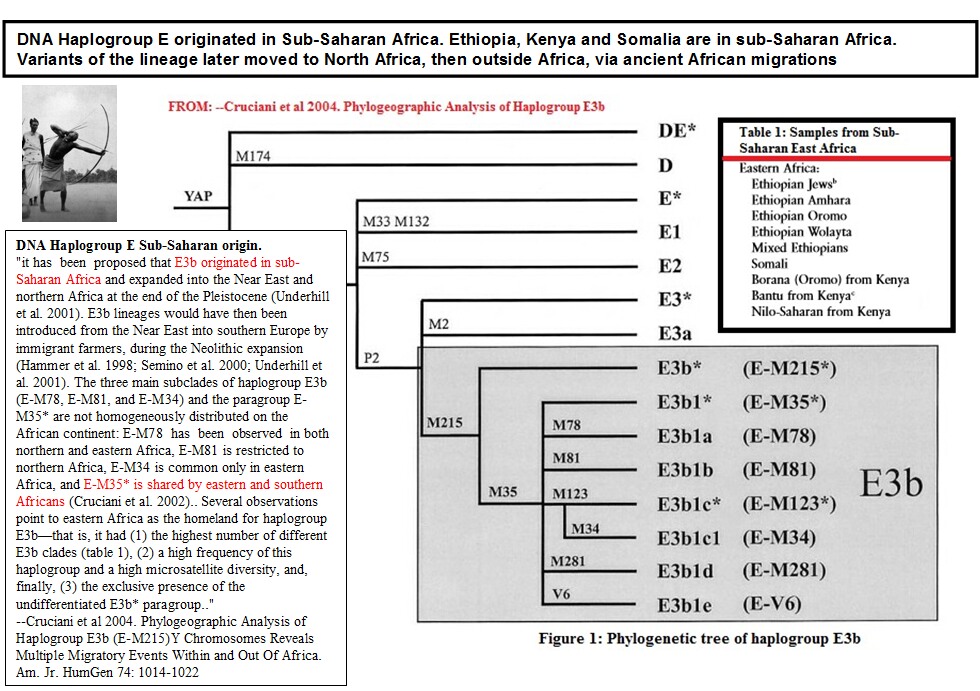
"it has been proposed that E3b originated in sub-Saharan Africa and expanded into the Near East and northern Africa at the end of the Pleistocene (Underhill et al. 2001). E3b lineages would have Reports 1015 then been introduced from the Near East into southern Europe by immigrant farmers, during the Neolithic ex-pansion (Hammer et al. 1998; Semino et al. 2000; Underhill et al. 2001). The three main subclades of haplogroup E3b (E-M78, E-M81, and E-M34) and the paragroup E-M35* are not homogeneously distributed on the African continent: E-M78 has been observed in both northern and eastern Africa, E-M81 is restricted to northern Africa, E-M34 is common only in eastern Africa, and E-M35* is shared by eastern and southern Africans (Cruciani et al. 2002).. Several observations point to eastern Africa as the homeland for haplogroup E3b—that is, it had (1) the highest number of different E3b clades (table 1), (2) a high frequency of this haplogroup and a high microsatellite diversity, and, finally, (3) the exclusive presence of the undifferentiated E3b* paragroup.." --Cruciani et al 2004. Phylogeographic Analysis of Haplogroup E3b (E-M215)Y Chromosomes Reveals Multiple Migratory Events Within and Out Of Africa. Am. Jr. HumGen 74: 1014-1022 |
|



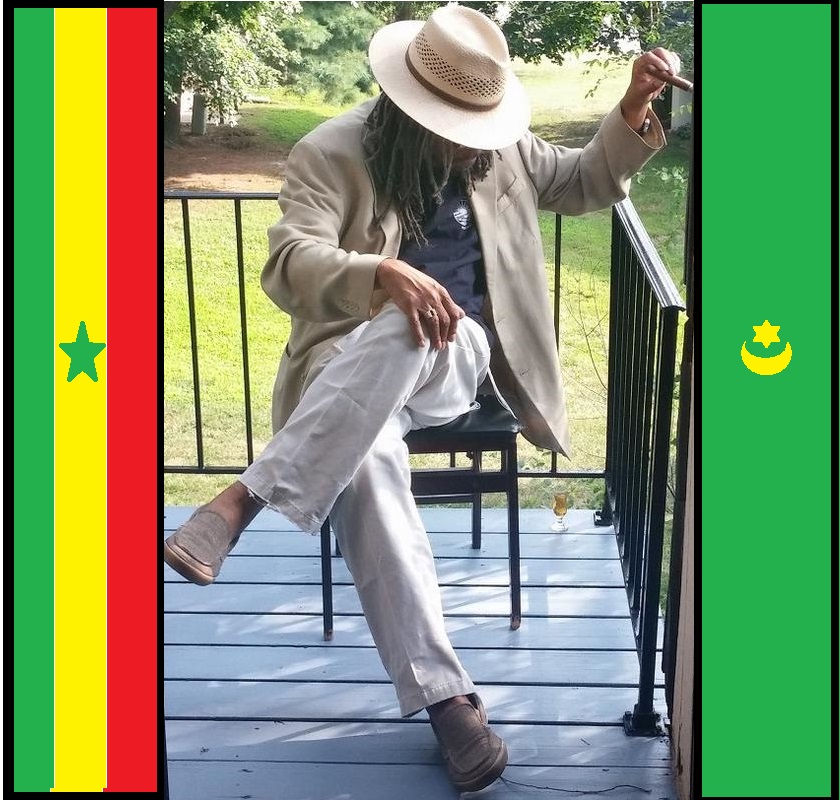





 ?
?







